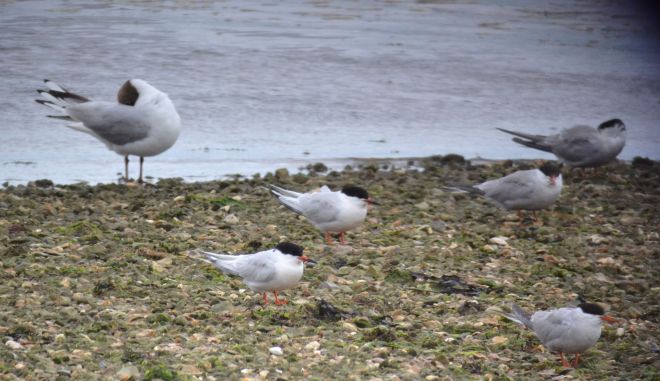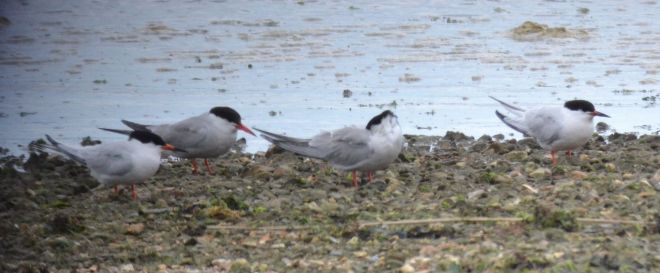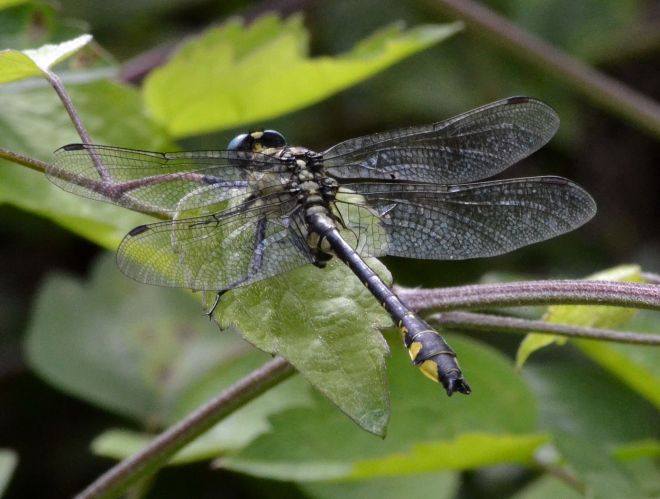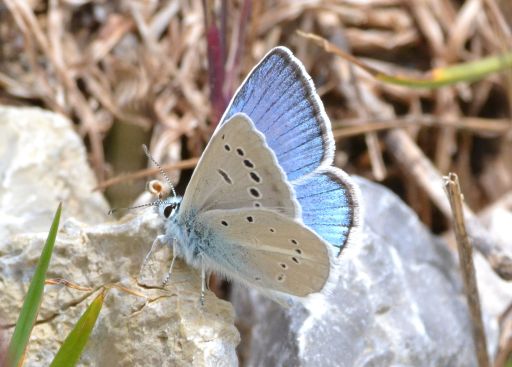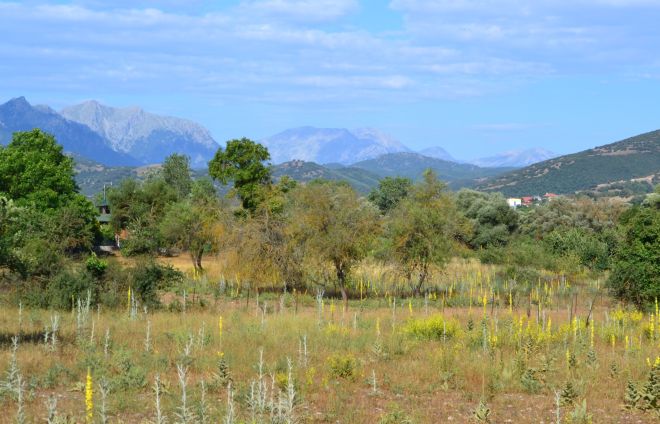The second part of the Naturetrek tour to southern Greece I joined last month was to a further renowned location amongst lepidopterists, Mount Parnassos above the northern shore of the Gulf of Corinth. There we spent two days exploring several high meadow and roadside sites that were known to our tour leader as holding butterflies of interest. The outcome was 10 more life-list additions including Niobe Fritillary (pictured below), Great Sooty Satyr, Purple Shot Copper and various new Blues, Graylings and Skippers.
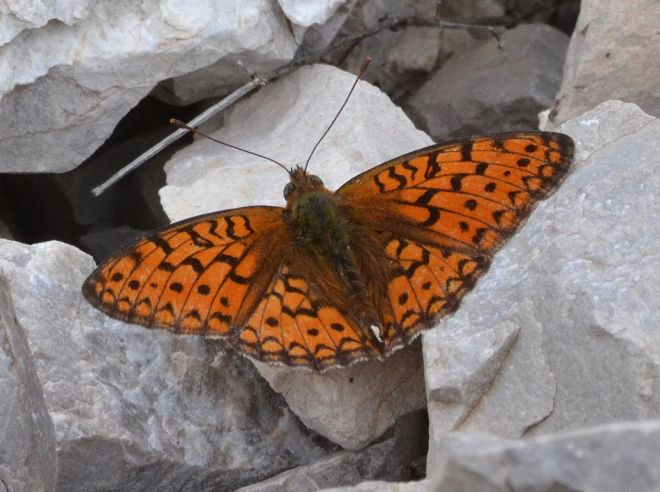
Niobe Fritillary
Our base was the hillside town of Delphi, a tourist trap that serves the nearby ancient site of the Sanctuary of Apollo. After arriving on 20th we walked down to some waste ground below the streets lined with hotels, eating places and souvenir shops to see what was about. Here I managed some pictures of Scarce Swallowtail (below) that in this part of Greece can belie it’s name by being more plentiful than continental Swallowtail. In my experience this big, floppy butterfly is difficult to capture well but reasonable results if obtained can be quite pleasing.

Scarce Swallowtail

Scarce Swallowtail

Eastern Bath White
Another common Mediterranean species that yielded above average images here was Eastern Bath White (above, right). And in the town itself we came across the only certain sighting for the trip of Southern Comma (below). The latter has sparser black markings on the top side than regular Comma and the unh marking that gives this species its name is Y rather than C shaped. The latter’s European range is from south-east France through Italy, the southern Balkans and Greece.

Southern Comma

Southern Comma
Three new (for me) Blues were observed at higher sites. Members of this group can often look more similar in pictures than they do in the field where jizz comes into play. Then something will just look or seem different from what has been observed more commonly before, and it is then a matter of identifying exactly what the newcomer is. I felt that when butterflying alone in les Cévennes (see here), and again here in Greece amongst very knowledgeable, Lafranchis-equipped tour colleagues.
A roadside male Amanda’s Blue (below) really stood out in this respect. Its dark outer borders to the upper forewings and pale ones to the inner lower hind-wings were both very apparent, but do not stand out so much in my pictures. But the underside is more clear-cut in ID terms having less orange than related species, and the clean looking unf with no cell spot is characteristic. The female, found at the same bramble patch as the White-letter Hairstreaks of an earlier post (see here) was less difficult to confuse. This was also a pleasing sighting since like many Blues females tend to keep a lower profile than territorial males.

Amanda’s Blue (male)

Amanda’s Blue (female)

Amanda’s Blue (male)

Amanda’s Blue (female)
Amanda’s is distributed across much of central and eastern Europe from the Baltic southwards into more mountainous Mediterranean areas. Perhaps surprisingly we found the even more widespread Idas Blue at just one meadow location. This common European Blue is similar in size and appearance to Silver-studded but with narrower forewing borders and other subtle differences. A clearer diagnostic is the array of black dots along the bottom edge. I only managed to gain images of our specimen (below) in the tour leader’s jar.

Idas Blue (male)

Idas Blue (male)
The rather more scarce Blue Argus (pictured below), another resident of the Balkans, Greece and Turkey, was located at one stony, high altitude site. There we came across a mating pair (far right), in which the Chapman’s-like white patch on the unh stood out in the female. Otherwise this butterfly rather suggested a smaller version of Chalkhill Blue. And that is the last of this complex and fascinating group for these two trip posts.

Blue Argus (male)

Blue Argus (mating pair)
Two more regional Graylings made up their own group’s quota for the trip. Unlike some of its very similar members that have featured in this journal recently, Freyer’s Grayling (pictured below) was unmistakeable due to it’s underwing pattern. The pictures below were taken at Galixidi on the Gulf of Corinth during our relocation from Kalavrita. But we also encountered this butterfly at the Sanctuary of Apollo and on Mount Parnassos itself.

Freyer’s Grayling

Freyer’s Grayling
The evocative sounding Great Sooty Satyr is one of those Graylings with a rather more interesting name, like The Hermit near Kalavrita earlier in the week. We recorded this larger species (pictured below) a number of times in dry, grassy places at medium altitude such as it favours. The butterfly exhibits a degree of variation between individuals in colouration and markings, especially in females.

Great Sooty Satyr (male)

Great Sooty Satyr (female)
The last new Skipper for the trip was Orbed Red Underwing Skipper (below, left and top right) that is also known as Hungarian Skipper. That brought the total of Grizzled-type species lifers from southern Greece to four and I can now tell the difference between all of them. So someone is bound now to tell me I have mis-ID’d Persian Skipper (below, bottom right) that was also observed on Mount Parnassos a number of times.

Orbed Red Underwing Skipper

Orbed Red Underwing Skipper

Persian Skipper
Two more familiar brown Skippers demonstrated the silliness of their parochial English names here. Essex and Lulworth Skipper (pictured below) were both encountered on Parnassos far from their attributed homes, but both species are of course distributed widely across Europe. “Norfolk Hawker” in the dragonfly world is another example of what must be some kind of historical anachronism, and I rather wish that like Green-eyed Hawker the two butterflies referred to above might also be accorded more sensible international names. Lastly, Mallow Skipper (below, bottom left) that crops up wherever I butterfly in Europe was observed here a number of times.

Lulworth Skipper

Mallow Skipper

Lulworth Skipper

Essex Skipper
On 21st we were about to head back down the mountain in overcast conditions, but still stopped at one high meadow for a quick look around. The sun then broke through and the location gradually but steadily revealed its treasures. Heath Fritillary was plentiful, the first time I have encountered it outside England. Revisiting the species’ stronghold of East Blean Wood in Kent (see here) had fallen off my agenda this year because of these travels, so I was pleased to encounter it again on Parnassos. HF has pretty much a pan-European distribution apart from the southern Iberian peninsula.

Heath Fritillary (all pictures)
Two more common and widespread continental Fritillaries also showed themselves in the meadow being discussed. I have yet to gain an acceptable top-side picture of Queen of Spain Fritillary (below left) but Spotted Fritillary (right) is often photogenic.

Queen of Spain Fritillary

Spotted Fritillary
This was where I succeeded in recording Greek Clouded Yellow for the trip, having seen it fly by a few times on Mount Chelmos. Males have a deep orange upper side that really stands out in the field, though differences from other Clouded Yellows in the underside (below left) are not so obvious. The head colour in the picture does give some clue to the top-side colouring. A pale helice form of regular Clouded Yellow (top right), observed several times during this tour, also gave itself up to the camera here.

Greek Clouded Yellow

Clouded Yellow (Helice form)

Clouded Yellow (sp)
Two more Coppers for the trip were added in the same meadow. Having gained good images of male Sooty Copper in les Cévennes, I was pleased to add a female (below left) to my collection here. Still more satisfying was self-finding Purple-shot Copper (right), a butterfly I have wanted to experience for some time. What a pity about that unsightly tear in one upper wing. Both these Coppers range widely across continental Europe.

Sooty Copper (female)

Purple-shot Copper (male)
A last featured sighting from this place is Southern White Admiral (below) that a number of times in my butterflying past has provided excellent value. I already possess some premium top-side pictures taken in Provence (see here) and now I was able to add good underside images to my collection for the first time.

Southern White Admiral

Southern White Admiral
It remains to present four more butterflies of note. At one roadside location regular Marbled White were flying as well as Balkan MW. But these were of the M g procida form that occurs in the southern Balkans and Greece. They appear very black and white by comparison either with their Balkan cousins or the browner and most widespread Melanargia galathea that is a common sight in the English high summer.

Marbled White f procida
On another mountain road we searched for Niobe Fritillary that features at the head of this post. This widely distributed larger Fritillary favours roadside Valerian and so was not difficult to locate. It is similar to the as widespread High Brown Fritillary but is distinguishable by black veins on the underside hind-wing and certain other diagnostics. I only managed acceptable pictures of the top side (below).

Niobe Fritillary

Niobe Fritillary
This Oriental Meadow Brown (below, left) was observed at the same ski resort bramble patch as the female Amanda’s Blue and White-letter Hairstreaks. By comparison with regular Meadow Brown the underside top wings have a rather cleaner look while the outer edges of the hind-wings are more scalloped. The upper side if seen is very different. This species occurs in the Iberian peninsula, southern Balkans, Greece and Turkey; as well as parts of southern France and Italy.

Oriental Meadow Brown

Faded Clouded Apollo
Lastly, on the afternoon of 22nd we drove up almost to the summit of Parnassos and walked into possibly the highest meadow of the trip. Conditions were overcast on our arrival but as soon as the sun came out the rocky slope before us became alive with Clouded Apollo (above right). Europe’s four Apollo species are butterflies I very much want to experience, but having been on the wing since early May those active here were all quite worn. We had encountered even more ragged individuals twice already.
The full species count for the two part tour of Mount Chelmos and Mount Parnassos, with life-list additions in bold, is: Swallowtail <P m gorganus>, Scarce Swallowtail, Clouded Apollo, Black-veined White, Large White, Small White, (Krueper’s Small White), Eastern Bath White, Greek Clouded Yellow, Clouded Yellow, Helice Clouded Yellow, Brimstone, Cleopatra, Eastern Wood White, (Purple Hairstreak), Sloe Hairstreak, Ilex Hairstreak, White-letter Hairstreak, Small Copper, Grecian Copper, Sooty Copper, Purple Shot Copper, Lesser Fiery Copper, Long-tailed Blue, Holly Blue, Iolas Blue, Eastern Baton Blue, Zephyr Blue, Silver-studded Blue, Idas Blue, Brown Argus, Blue Argus, Chelmos Blue, Escher’s Blue, Amanda’s Blue, Chapman’s Blue, Ripart’s Anomalous Blue, Turquoise Blue, Meleager’s Blue, Adonis Blue, Common Blue, Southern White Admiral, Red Admiral, Painted Lady, Queen of Spain Fritillary, Small Tortoiseshell, Comma, Southern Comma, (Cardinal), Silver-washed Fritillary, Dark Green Fritillary, Niobe Fritillary, Spotted Fritillary, Lesser Spotted Fritillary, Heath Fritillary, Marbled White <f procida>, Balkan Marbled White, Woodland Grayling, Delattin’s Grayling, Freyer’s Grayling, The Hermit, Great Sooty Satyr, Great Banded Grayling, Meadow Brown, Oriental Meadow Brown, Small Heath, Speckled Wood <P a aegeria>, Wall Brown, Large Wall Brown, Lattice Brown, Oberthür’s Grizzled Skipper, Olive Skipper, Orbed Red Underwing Skipper, Persian Skipper, Mallow Skipper, Dingy Skipper, Lulworth Skipper, Essex Skipper, Small Skipper, Large Skipper.
(Butterflies in parentheses were seen by other group members but not myself).

